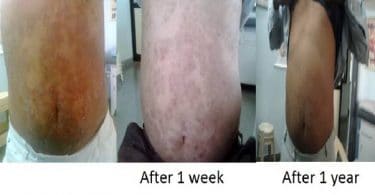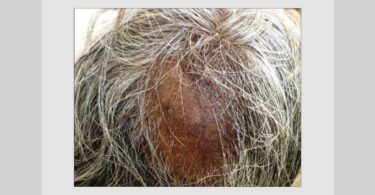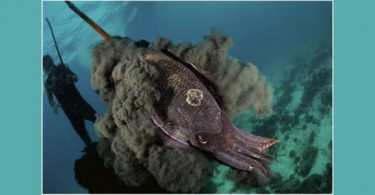(Editor’s Note: As of August 2020, these two cases were fully confirmed high and very high positive for igG antibodies with the last generation test of Abbott Laboratories. )
Abstract: The author presents two cases of febrile respiratory infection with high covid-19 probability (due to epidemiological and clinical evidence) who recovered fully following classical homeopathy treatment.
The high covid-19 probability was due to epidemiological and clinical evidence. Both patients recovered fully following classical homeopathy treatment.
A couple – a man and a woman, both developed respiratory infection symptoms during and after a trip to Paris, returning to Athens in mid-March 2020. They both traveled to Paris on business, visiting overcrowded places (international trade fairs) and the busy relevant airports.
CASE 1
The first patient was a 37-year-old man with no diagnosed serious systemic diseases, who was in good general condition. The patient developed the first serious symptoms while he was still abroad, with a severe headache and a runny nose accompanied with fatigue; on his first day back to Athens, he developed a high fever (39.3 °C) with chills and malaise.
The fever (up to 38.5 °C) persisted for several days, often with chills and a severe concomitant dry cough {++}, (mainly during the day, worsening at the slightest movement {+++}) and occasionally with slight breathlessness. The patient also had a sore throat with a burning pain (worse on the left side), a feeling of heaviness behind the eyes, complete exhaustion, as well as a great mental distress and a fear that something very serious might happen to him {+++}.
His sleep was restless {++}; he was tossing and turning, unable to fall asleep, often getting up and lying back down with severe chills. Anorexia and thirst {++}, with sips of water from the tap. White coating on the tongue.
On the first day the fever appeared, he contacted his physician and received treatment (clarithromycin 500 mg every eight hours) which he discontinued himself after three days of no improvement, and after associating the antibiotic treatment with diarrhea (without abdominal pain) that he developed.
On the eighth day of illness (and upon seeing the great improvement in his partner’s condition, who had already started homeopathic treatment) he decided to initiate homeopathic treatment himself. On the first day, based on the aforementioned symptoms (Repertorisation fig 1), he received Arsenicum 200CH (TID/one day).
Repertorisation fig 1
From as early as the first twelve hours post treatment, the patient reported a clear improvement of his general condition (and a mental “wellbeing”), and after 36 hours, a clear drop in fever (37.5 °C max.)
At 48 hours, he had a low-grade fever but his cough was exacerbated, emerging as the major symptom, worsening during the day and at the slightest movement {++++} (even with breathing), and he developed an excessive thirst {++++} (the patient reported drinking 30 to 40 glasses of water daily from the tap!) (Repertorisation fig 2)
Repertorisation fig 2
The patient received Bryonia 200 CH (TID/one day) with a clear improvement in the cough and a significant decrease of the thirst. After 24 hours (on the fourth day of treatment) and even though he was feeling much better, his condition suddenly deteriorated, developing high fever (39.6 °C) and a new exacerbation of the cough with a rapid heartbeat, slight breathlessness and a feeling that “something would happen to him”. Responding to a question by his treating physician, he reported a history of panic attacks (4 to 5 episodes a month until recently, before the infection).
The patient received Aconitum 1M, one globule, and the next morning he had a dramatic improvement with a temperature of 37.5 °C and a clear reduction in other symptoms; he received one more dose of Aconitum 1M and a further one in the evening.
The next morning, he woke up feverless with symptoms having almost completely resolved (including diarrhea which had persisted up to that point) with the exception of a slight cough. He now had a very good appetite. From then on, he didn’t receive any further homeopathic remedy and three days later he reported having almost completely recovered, feeling only slightly weak but being in a very good mood (much better than he was before the infection).
CASE 2
The second patient was a 31-year-old woman in good general condition, without any diagnosed serious systemic diseases. She had already started a homeopathic treatment two months before for mental issues (melancholy and emotional instability, and she had taken Ignatia 200CH and Ignatia 1M).
She was the partner of the aforementioned man, and she had traveled with him, following the same trip patterns. The woman developed the first serious symptoms three days after her partner, with a 39.2 °C fever (it had been years since she had last developed a fever) and intense concomitant musculoskeletal pain throughout the body {+++} (the most bothersome symptom, according to her), a dry cough {++}, a slightly sore throat, a runny nose, a complete loss of taste and smell {+++} and anorexia, as well as semi-solid stools (without abdominal pain). Thirst for cool water was normal. She felt exhausted {++} without any restlessness or fear. The patient talked to her physician from the onset of the fever and received Eupatorium Perfoliatum 200CH (TID/ one day) (Reportorisation fig 3).
Repertorisation fig 3
After 36 hours, she felt better with the fever dropping significantly (37.5 °C) and an improvement of the musculoskeletal pain (she discontinued Eupatorium after having taken 5 doses). She was now exhausted, with no appetite and no sense of smell and taste.
The following day (third day of treatment), the low-grade fever and the bouts of dry cough persisted, and the patient reported nausea, a “tight” stomach and slight breathlessness. Mentally, she felt trapped in the house and like running away. She received Ignatia 200CH (one dose) with an immediate improvement in the cough and the breathlessness.
After approximately 36 hours (fifth day of treatment), the patient still had a low-grade fever and reported a new sudden deterioration of the cough and a mild breathlessness along with a heaviness in the precordial region {++} and a rapid heartbeat. Mentally, she was quite scared {+++} that something might happen to her, maybe something heart related. (Repertorisation fig 4)
Repertorisation fig 4
She received Aconitum 1M (one dose) with an immediate improvement in all her symptoms. On the next day (sixth day of treatment), the patient was feverless with very little cough and an improved appetite, while for the first time she felt like her sense of taste and smell were coming back.
Mentally, she felt much better, calmer and optimistic. She needed to rest, and she slept for many hours. Homeopathic treatment had been discontinued (she had received 4 doses of Aconitum 1M in total) three days before and the patient was feverless and feeling well, without symptoms except a mild fatigue.
Conclusion: Both the above-mentioned cases had a good outcome following classical homeopathic treatment. Naturally, whereas a COVID-19 infection is highly suspected due to the clinical and epidemiological evidence, it cannot be demonstrated without a positive diagnostic test for SARS-CoV-2 antibodies, which is expected as soon as it can be carried out.
In any case, homeopathy’s therapeutic competency against this particular viral infection seems to be remarkable. This is also consistent with the first clinical experiences as well as past data, whether they involve seasonal influenza and a host of other viral infections or historical information such as the successful homeopathic treatment of the Spanish flu.
It would be in the best interest of the health of humankind if the potential of classical homeopathic treatment could be scientifically evaluated, transposing it into proper clinical application in the COVID-19 pandemic, for instance in the setting of a NHS clinic regardless of case severity, and possibly in combination with other therapeutic approaches without compromising the safety of patients (due to the lack of side effects of homeopathic remedies in conjunction with the fact that other treatment options would be available to them).
This way, statistics could help provide a clear assessment of what we believe is the great therapeutic potential of classical homeopathy in combating COVID-19 infection, but primarily in the protection of human health, with further invaluable social impact (even in public finances and the wider broader economic activities).
The results of Anti-SARS COV 2 IgG:
ΠΟΤΕΛΕΣΜΑΤΑ ΕΞΕΤΑΣΕΩΝ
Αντισώματα έναντι SARS-Co\/Q .lgG- lgM
Εξέταοη ΑποτέλεσμαΈ Μονάδες Τιμές Αναφοράς
Anti-SARS-CoV-2 Ι G 1.89 lndex
Μέθοδος ανάλυσης ; CMIA (CE IVD)
Κατασκευάστρια εταιρία: Abbott [)iagnostics
‘ • Ευαισθησία ημέρες μετά την εμφάνιση συμπτωμάτων)
- Ειδικότητα μέθόδου:.99.63%
.Anti-SARS-CoV-2 1gM 0.25 lndex Αρνητικό
> 1.1
Ονο ατεπώνυ o ‘.h
Ηλικία:
40Ζ0
ΠΟΤΕΛΕΣΜΑΤΑ ΕΞΕΤΑΣΕΩΝ
Αντισώματα έναντι SARS-CoV-2 lgG- lgM
Εξέταση -Αποτέλεσμα Μονάδες Τιμές Αναφοράς
Anti-SARS-CoV-2 lgG 5,07 lndex <1.40
Μέθοδος ανάλυσης CMIA (C IVD)
- ΚατασκευάσΦια εταιρία: AbbottDiagnostics
Εύαισθησίάμεθόδου: 100.094 ημέρες μετά την εμφάνιση Τών συμπτωμάτων)
Ειδικότητα μεθόδου: 99,63%
Anti-SARS-CoV-21 M 0.84 _ Αρνητικό < 0.9
Αμφίβολο 0.9-1,1
Θετικό














Very nicely done!
Thank you for your comments!
A clear ‘mind symptom’ gives the break through in both the cases!
Classical prescription based on perfect history and anamnesis.
Good cases, analysis and prescription.
Excited to read. So one thing that I generally expect that a Single remedy generally clears up the whole case was refuted and also brings in me confidence that such cases may often need change of remedy as per demand even in 1-2 days.
But still there is a question: Could we have chosen some another remedy so that case May have not demanded the application bof 3 remedies respectively. This is just my enquisitiveness to understand Better. Thanks
Very good question and not easy to answer in a few words! To my opinion and based on the teaching of masters of classical homeopathy (Hahnemann, Kent, Vithoulkas ect.) in an acute illness the decision to pass to the next remedy depends on two points. The first one is the evaluation of the therapeutic response of the patient’s organism to the previous remedy. This is measured by the classial medical criteria ( clinical examination and laboratry tests ) but more important than this from the patient’s degree of suffering as expressed by himself and bystanders. The second point is how clear to us is the “image” of the next remedy. So for the classical homeopath to resolve a case there is only one way (supposing that he chooses the rigt remedy every time). The factors that predict if an acute illness can be resolved by one or more remedies are the level of health of the patient ( see Vithoulkas teaching), the pathogenic power of the cause and the stage of the disease in time, Thank you for your interesting comment!
indian grandmothers were using some herbal mixture called kadha for nose flow cough etc,those times tension anxiety panic fear words were unheard probably they followed teachings of bhagat kabir.this kadha now is available patented form called joshina by hamdard is very effective plus a herbal tea manufacturd by a hardwar firm is no less than eupator. classical homeopaths if serve more as disease preventive doctors corona can be fought with strong immunity.example let us advise business community that when they are ill and lie at home but mind is having visions of shop let him take a dose of bryonia,if got panic by a notice from incometax department take a dose of aconite before rushing to a vakil.retired persons starve for some commune support if depressed let them take a dose of aurum.active politicians but weak with cold sweat on forehead keep veratrum alb in their pocket.we are forgetting nash when he said veratrum viride200 is icu remedy for high pneumonia fever with low blood pressure for lay homeopath he advised see tongue mid red streak.need of hour is for classical homeopaths to advise public with nash simple tips.mangialavory types if wear nash uniform corona will run away.
Fine analysis and prescription. And thanks for your well explained reply to Dr. Aejaz Husain.
A request to Er. SS Hari , IDSE (Retd) to clarify his last sentence. Thanks.
rishi muni say that your brain inside is in direct contact with your thumb ,when you are sincere want to impress your views use first finger,if none listens show your thumb,midway be a politician explain by a lengthy lecture keeping both your hands at back. nash had homeopathy on these two finger tips,probably he visualised acute diseases like corona is do die final war,vital force has to be on offensive attitude to win.as education interest find michael fras homeo icu expert author of a book,i could not find a word from him about homeo weaponary details.nash left legacy see mid tongue red streak high fever pneumonia vital force low low bp,modern homeopath may confuse with high bp.when you are in icu ward no time to see mind symptoms that is later business to energise asympto types by classical homeopaths, has much time to attend such classes esp for senior citizens time pass.
for remote villagers,if ayush wants may cosider clematis bach flower remedy will power enhancer,goat milk all minerals milk in general plus lac deflo30 for weak anaemic.
old era homeopaths recognized human below neck diseases are an animal quality question of survival competition as lions are fond of eating goat flesh.with predominance of animal qualities highly business minded to gain material comforts at cost of spiritual gains go as BILIOUS personality with peevish irritable attitude bile flow is disturbed as liver affected and three remedies nux bryonia eupatorium take lead seat,most serious is eupatorium with severe muscular bone pains thirst for cold water even before chill stage with low power to perspire after heat a sign of influenza like fever,bryonia easily perspires this type of business trader sensory nerves blunted talks incoherent low grade internal heat dry mouth thirsty constipated but chill is predominant pleurisy exudative stage as in pneumonia,nux liver congested constipated but frequent desire for stool urination not producing result,these three remedies calm down animal like competitive spirit,will improve immunity to fight covid which is miniscule animal.